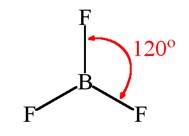Chemistry NCERT Exemplar Solutions Class 11th Chapter Four
Get insights from 99 questions on Chemistry NCERT Exemplar Solutions Class 11th Chapter Four, answered by students, alumni, and experts. You may also ask and answer any question you like about Chemistry NCERT Exemplar Solutions Class 11th Chapter Four
Follow Ask QuestionQuestions
Discussions
Active Users
Followers
New answer posted
6 months agoContributor-Level 10
This is a Multiple Choice Questions as classified in NCERT Exemplar
Ans: Option (iv)
(a) A molecule which has a zero bond order never exists and a molecule having a non-zero bond order either exists or is expected to exist.
(b) If the value of bond order is high then the bond strength will also be higher. Electrons present in the bonding molecular orbital are known as the bonding molecular orbital ( Nb ) and the electrons present in the anti-bonding molecular orbital are known as anti-bonding electrons ( Na ). The half of the difference of bonding and anti-bonding electrons is known as the bond order.
The bond order of Be2 : Be2=s 1s2, s
New answer posted
6 months agoContributor-Level 10
This is a Multiple Choice Questions as classified in NCERT Exemplar
Ans: Option (iv)
In the molecules of boron ( B2 ), carbon ( C2 ) and nitrogen ( N2 ) the energy of s2pz molecular orbital is greater than the energy of P2px and P2py molecular orbital.
So, the correct order of energies of molecular orbital of N2 is
(π2py ) > (σ2pz ) < (* 2px ) ≈ (π*2py )
New answer posted
6 months agoContributor-Level 10
This is a Multiple Choice Questions as classified in NCERT Exemplar
Ans: Option (ii)
The element B represents the electronic configuration of phosphorus atom and element C represents the electronic configuration of chlorine atom. Both phosphorus and chlorine are non-metals hence the bonding forming between them will be a covalent bond.
New answer posted
6 months agoContributor-Level 10
This is a Multiple Choice Questions as classified in NCERT Exemplar
Ans: Option (iv)
The electronic configuration of B given as 1S2 2S2 2P6 3S2 3P3 which represents phosphorous atom. The electronic configuration of C is given as 1S2 2S2 2P6 3S2 3P5 which represents chlorine molecule.
So, the molecular formula representing B and C will be phosphorous trichloride ( PCl3 ) which corresponds to BC3 .
New answer posted
6 months agoContributor-Level 10
This is a Multiple Choice Questions as classified in NCERT Exemplar
Ans: Option (ii)
The electronic configuration of C is given 1S2 2S2 2P6 3S2 3P5 which the electronic configuration of chlorine atom ( Cl ). It is unstable due to one unpaired electron in the p-subshell. Hence, the C2 will be the stable form of C as it will form a dichloride molecule ( Cl2 ).
New answer posted
6 months agoContributor-Level 10
This is a Multiple Choice Questions as classified in NCERT Exemplar
Ans: Option (i)
The electronic configuration of A 1S2 2S2 2P6 is having no unpaired electrons in the outer most shells. So, an atom having no unpaired electron in its valence shell is said to be stable.
New answer posted
6 months agoContributor-Level 10
This is a Multiple Choice Questions as classified in NCERT Exemplar
Ans: Option (ii)
For a molecule having a hybridization of sp2, its geometry in plane is trigonal planar. For a molecule having a trigonal planar geometry, its bond angle will be 120°

New answer posted
6 months agoContributor-Level 10
This is a Multiple Choice Questions as classified in NCERT Exemplar
Ans: Option (iv)
The electrons involved in the formation of any chemical bond are the valence shell electrons. In the given electronic configuration,1s2 2s2 2p6 3s2 3d2 4s2 the valence shell electrons are in d-orbital and s-orbital. So, the four electrons involved in the chemical bond formation will be 3d2 4s2.
New answer posted
6 months agoContributor-Level 10
This is a Multiple Choice Questions as classified in NCERT Exemplar
Ans: Option (ii)
Hydrogen bond is the strongest in that molecules have a higher difference in electronegativity. Due to the small size of the oxygen atom, it has the highest electronegative character. So, H2O molecules will have the strongest hydrogen bonding
HCl, HI and H2Sdo not have hydrogen bonding between their atoms. So, H2O will have the strongest hydrogen bonding.
New answer posted
6 months agoContributor-Level 10
This is a Multiple Choice Questions as classified in NCERT Exemplar
Ans: Option (iii)
(i) The molecule XeF4 has a square planar geometry and the bond lengths of all the fluoride atoms attached to xenon atoms are equal.
(ii) The molecule BF4 - has a tetrahedral geometry and the bond lengths of all the fluoride bonds attached to boron are equal.
(iii) In the molecule C2H4 all the bonds are not equal. The bond length of the double bond between the carbon atoms is 134 pm and the bond length of CH- is 110 pm.
(iv) The molecule SiF4 has a tetrahedral geometry and the bond lengths of all the fluoride atoms attached to silicon atoms are equal.
Taking an Exam? Selecting a College?
Get authentic answers from experts, students and alumni that you won't find anywhere else
Sign Up on ShikshaOn Shiksha, get access to
- 66k Colleges
- 1.2k Exams
- 680k Reviews
- 1800k Answers
